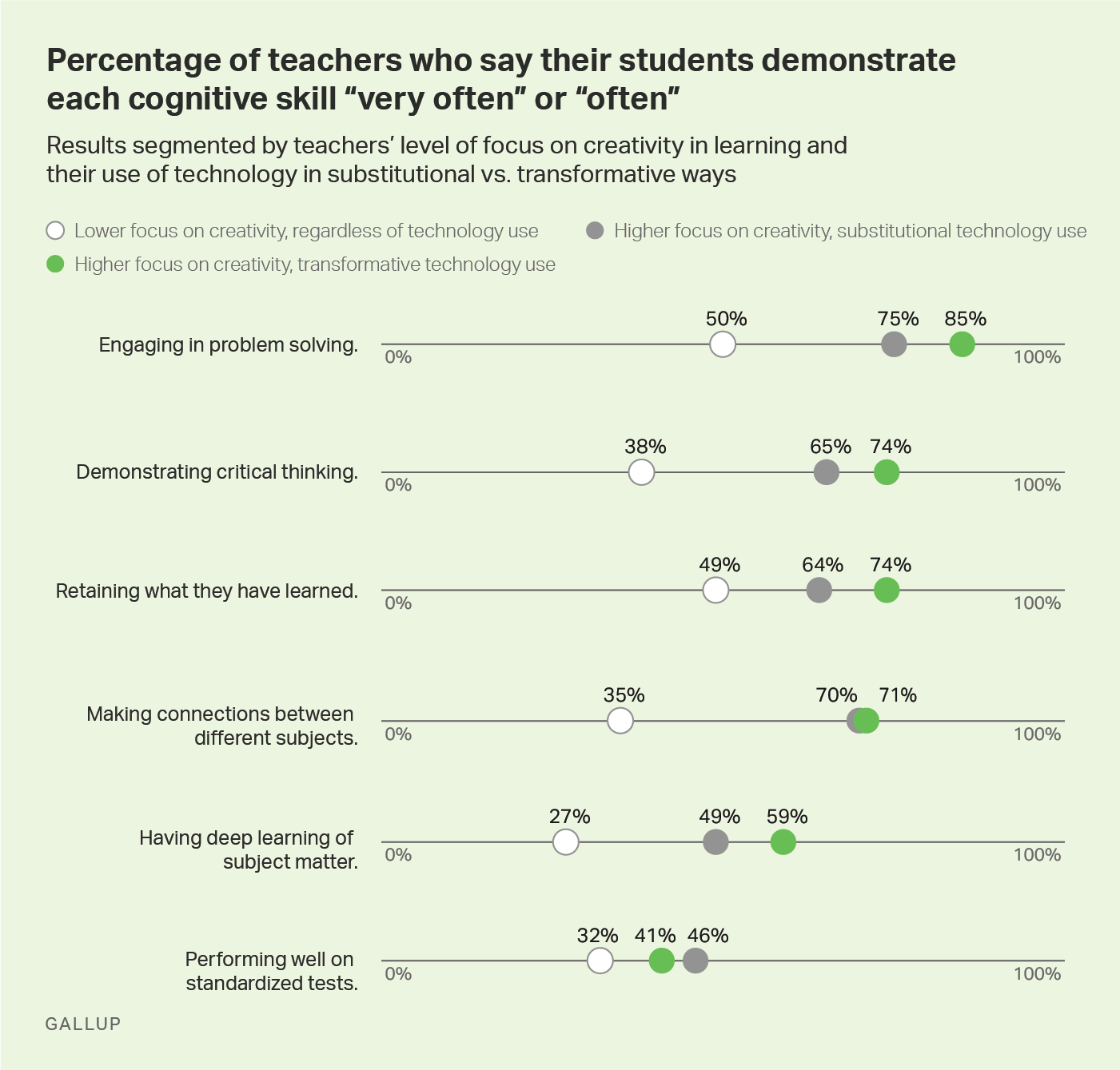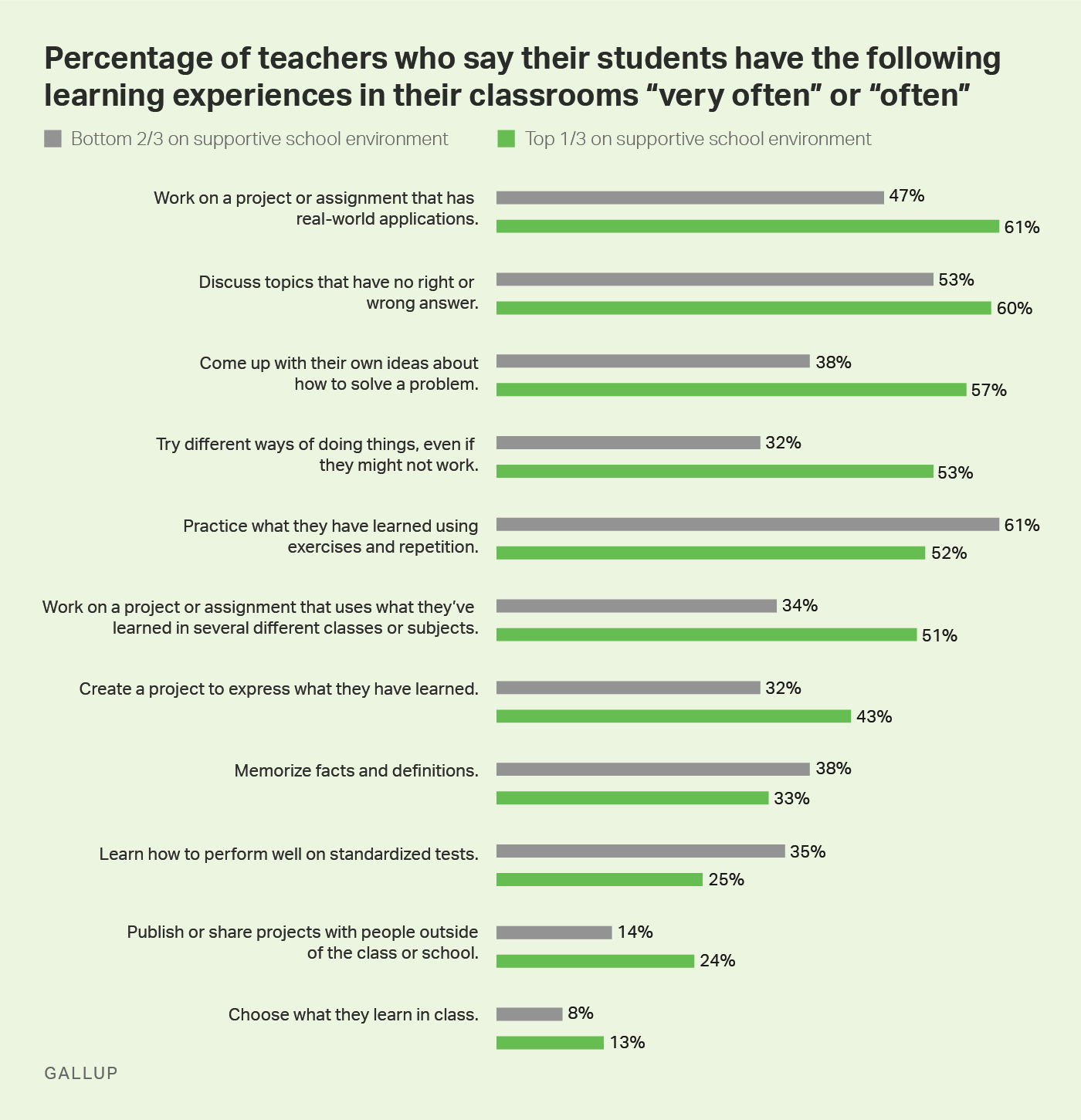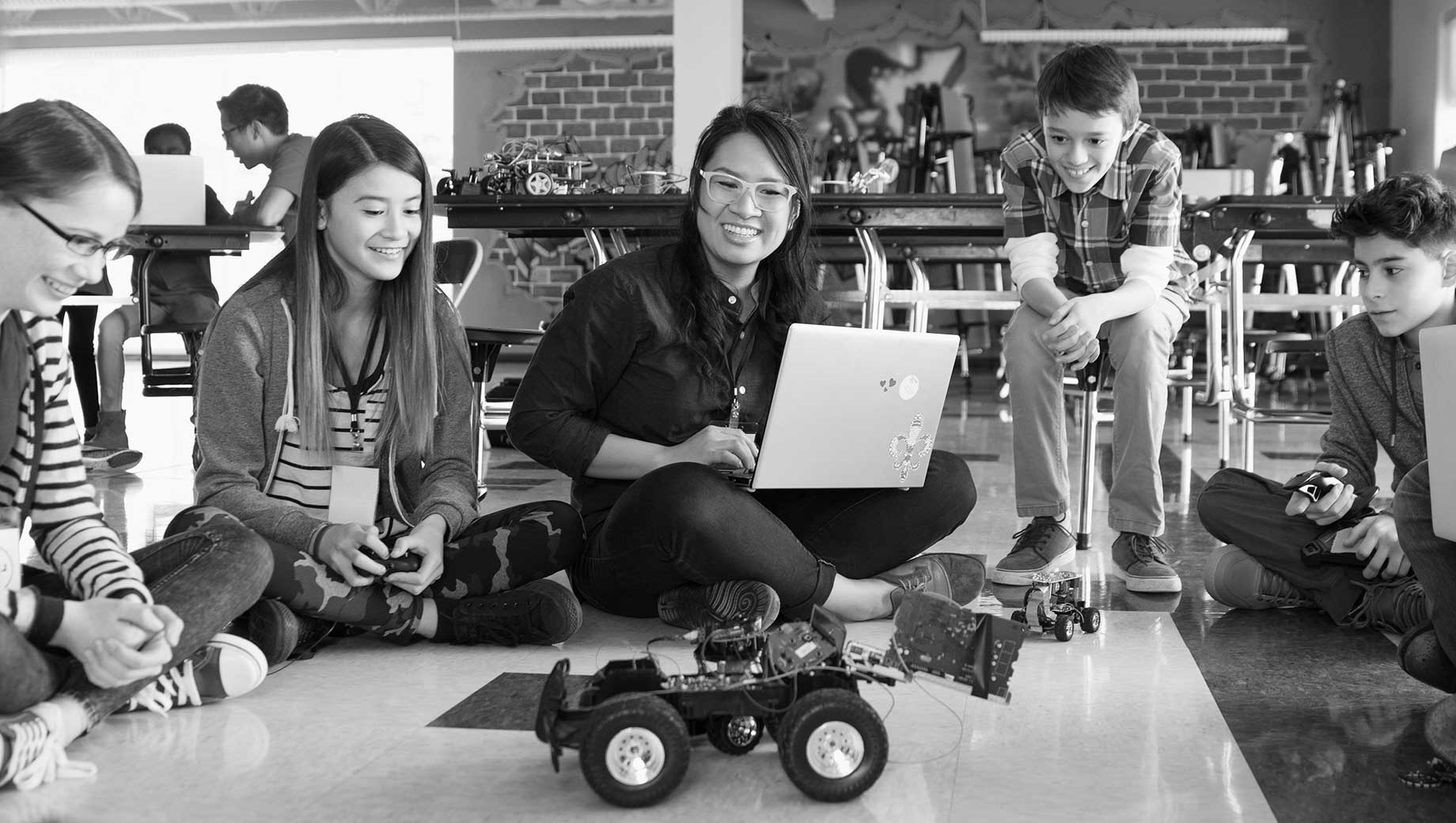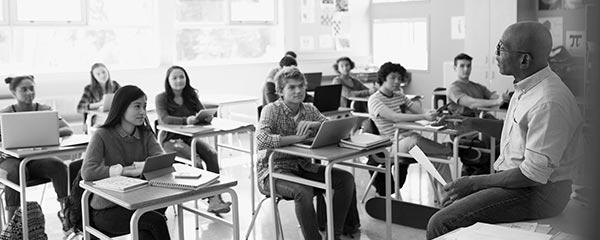WASHINGTON, D.C. -- Creativity in the classroom goes hand in hand with exceptional student learning, according to a new ���۴�ýstudy examining U.S. education. Specifically, K-12 teachers who frequently make assignments that require students to think creatively are much more likely than other teachers to observe higher-order cognitive skills in their students. These skills include:
- engaging in problem-solving
- demonstrating critical thinking
- making connections between different subjects
- having deep learning of subject matter
- retaining what they have learned
Classroom creativity also corresponds to more engaged, confident learners. Specifically, teachers who practice creativity in learning are much more likely than their counterparts who do not practice this to say their students often take responsibility for their own learning; feel confident about their ability to master difficult material; are willing to take risks; and display a strong desire to learn more about the subjects taught in school.
These findings are based on a nationally representative online survey of 1,036 K-12 teachers conducted March 27-April 5, 2019, using the ���۴�ýPanel. Additionally, for this study, ���۴�ýconducted online surveys of 2,673 parents of students in grades K-12, as well as 853 students in grades six to 12.
Teachers' use of creativity in learning was determined by the frequency with which they report allowing students to do each of the following: 1) choose what to learn in class; 2) try different ways of doing things, even if they might not work; 3) come up with their own ways to solve a problem; 4) discuss topics with no right or wrong answer; 5) create a project to express what they've learned; 6) work on a multidisciplinary project; 7) work on a project with real-world applications; and 8) publish or share projects with people outside the classroom.
Creativity Plus Transformative Use of Technology May Reap Even Greater Benefits
Gallup's new finds that teachers who combine creativity with assignments that make transformative use of technology see even better student outcomes.
Examples of transformative use of technology include using tablets or computers to create multimedia projects, conduct research, analyze information and create complex projects that cross disciplines.
As the following chart shows, 85% of teachers who focus on creativity in learning and use technology in transformative ways say they often see their students engaging in problem solving. This drops to 75% among teachers who foster classroom creativity but use technology in more substitutional ways (replacing paper and pencil with tablets or computers to do the same tasks) and to 50% among teachers who maximize neither creativity nor transformative technology in the classroom.
Similar gaps by teaching method are seen in teachers' ratings of their students for critical thinking, retention of material and deep learning of subject matter.

Among creativity-focused teachers, those who make transformative use of technology and those mainly using technology in substitutional ways are about equally likely to say their students make connections between different subjects and perform well on standardized tests. However, both groups are more likely than teachers who are less creativity-focused to say their students demonstrate these skills.
School Culture May Encourage or Limit Creativity
Aside from teachers' own classroom practices, teachers who work in a demonstrably supportive school environment are much more likely than teachers in less receptive environments to assign creative learning activities in their classroom.
In this study, a supportive school culture is defined as one that is open to change and new ways of doing things; gives teachers autonomy to try new things; embraces students' use of technology; has parents who are supportive of teacher innovation; and is not focused primarily on test scores.
Fifty-three percent of teachers in highly supportive school environments versus 32% of those in less supportive environments say their students often have the chance to try new ways of doing things.
Also, 43% of teachers working in highly supportive environments versus 32% of those in less supportive environments say their students often have the opportunity to create a project to express what they've learned.

Collaboration among staff is also an important factor in teachers' use of technology in the classroom: 83% of teachers say they get ideas for incorporating tablets or computers into their lesson plans from other teachers they know personally.
Students Want More Say in What They Learn
The study finds that the vast majority of teachers (87%) and parents (77%) agree that while teaching methods that inspire creativity may take more work, they have a bigger payoff for students.
Despite this, many students feel they don't get to spend enough time at school engaged in creative activities.
- Nearly three in four (73%) say they spend too little time choosing what they learn in class.
- More than four in 10 say they spend too little time demonstrating what they have learned in creative ways (44%) or trying new ways of doing things (43%).
Bottom Line
Gallup's new shows that teachers who frequently assign creative learning activities and make transformative use of technology are more likely than other teachers to say their students exhibit valuable cognitive traits. Essentially, these teachers are more likely than others to perceive that their students are highly engaged, confident problem-solvers who can think critically, retain what they learn and have a deep interest in the subject matter.
Further, teachers who work in supportive school environments are much more likely than others to perceive beneficial qualities in their students.
Thus, there can be a compounding effect whereby teachers implementing creative strategies and leveraging transformative use of technology within supportive school environments may have the most success, on average, with their students. By contrast, those not implementing creative strategies or utilizing technology to its fullest, and working in less supportive environments, may have the least success.
Stakeholders looking to improve student outcomes therefore have three areas on which to focus: helping teachers provide more opportunities for student creativity; helping teachers use technology in more transformative ways; and fostering more support at the school, district and parental levels for teachers to adopt these valuable teaching approaches.
Learn more about creativity in the classroom with quotes from teachers, parents and students collected during the qualitative phase of this study.




